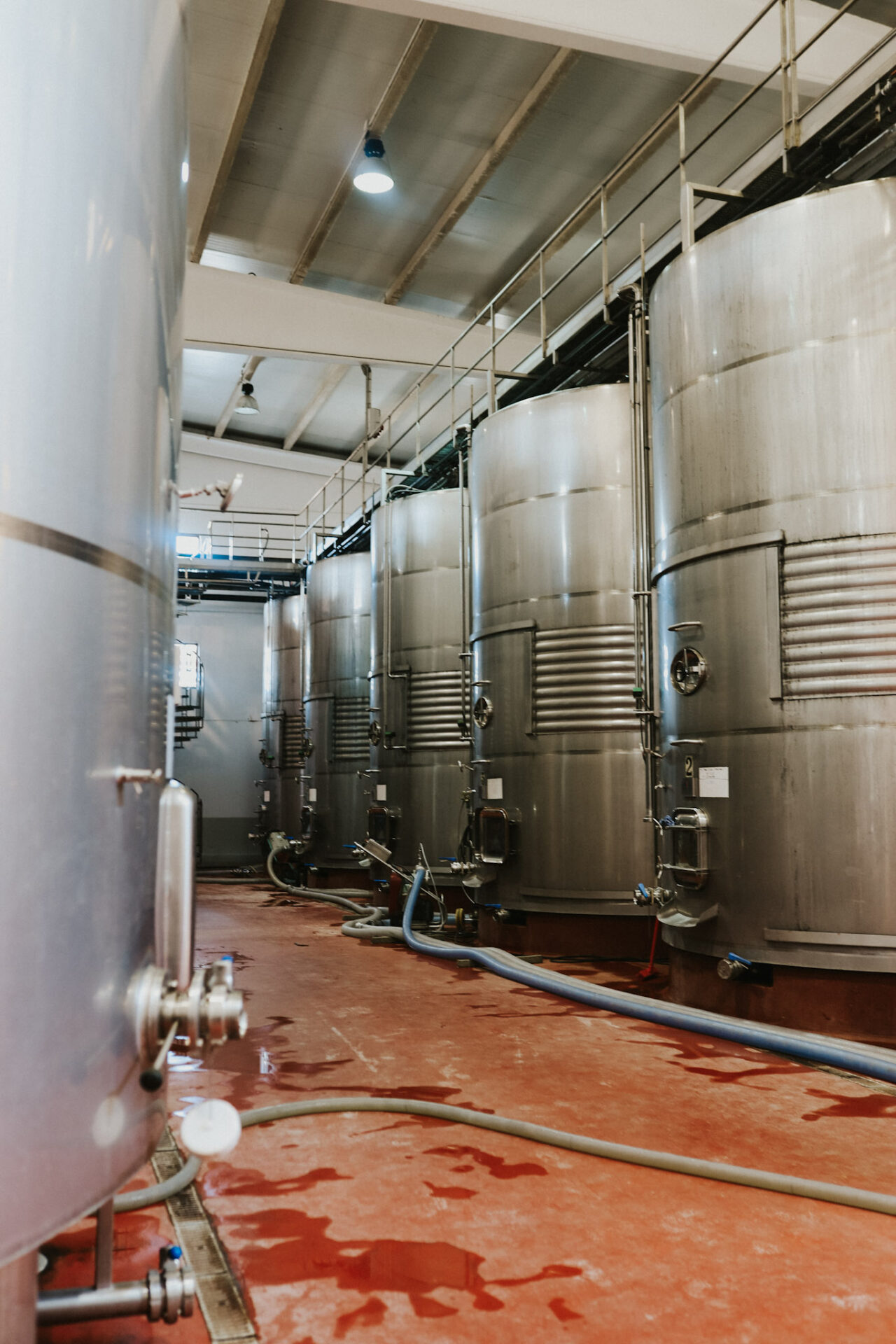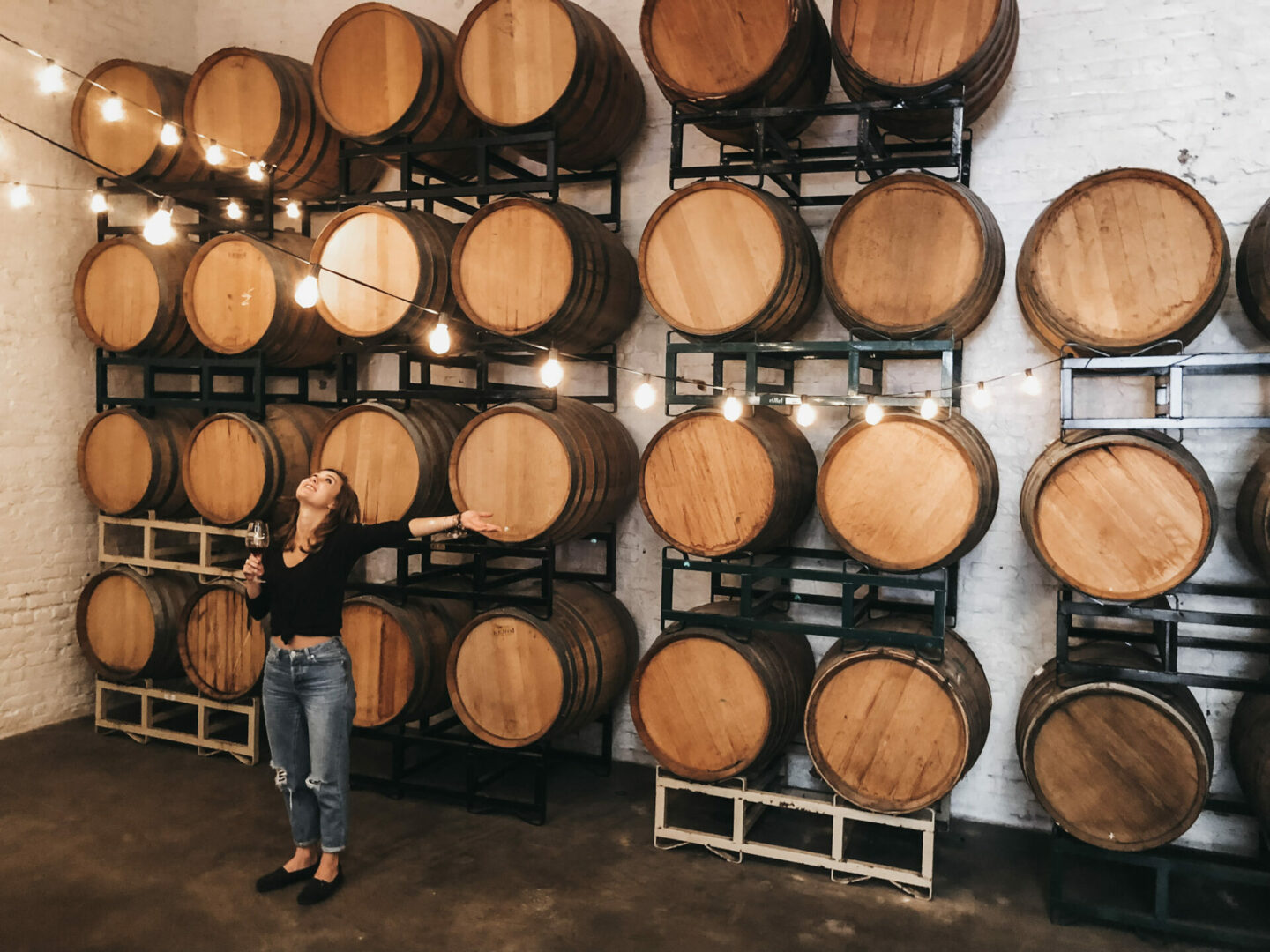
If you’re new to the world of white wines, you might have heard the term “unoaked Chardonnay” thrown around. But what does it mean, and why is it making waves in the wine scene?
Well, my fellow wine enthusiasts, let’s dive into the delightful world of unoaked Chardonnay.
What is Unoaked Chardonnay?
Unoaked Chardonnay is like a breath of fresh air in the wine universe. Unlike its oaked counterpart, which spends time aging in oak barrels, unoaked Chardonnay takes a different path.
It’s a wine that’s pure and unadulterated, allowing the true character of the grape to shine.

Stainless Steel Tanks: The Magic Behind Unoaked Chardonnay
To understand unoaked Chardonnay, we need to talk about its home during fermentation.
Instead of cozying up in oak barrels, this wine rests in stainless steel tanks. Why? Because stainless steel is like the little black dress of winemaking – it never goes out of style.
Stainless steel preserves the crispness and freshness of the grapes, ensuring you get a pure expression of the fruit. For example, at Bricoleur Vineyards, their Unoaked Chardonnay is carefully night-harvested at peak maturity, whole cluster pressed, and then fermented and aged for six months in stainless-steel tanks and drums to maintain its vibrant fruit character. It’s a neutral way for the wine to develop.
Aging wine in oak, on the other hand, will impart flavors from the wood such as vanilla, baking spice, and coconut. If you’re looking for a buttery Chardonnay, you’ll want one aged in oak, for sure!

Where to Find Unoaked Chardonnay
Unoaked Chardonnay can be found in various wine regions around the world, but some regions are particularly renowned for producing exceptional stainless steel Chardonnays. Here are a few notable regions known for their unoaked Chardonnay:
Chablis, France
Chablis is often considered the unoaked Chardonnay capital of the world.
Located in the northernmost part of Burgundy, France, Chablis is famous for its crisp and mineral-driven Chardonnays. The region’s cool climate and limestone-rich soils contribute to the unique expression of unoaked Chardonnay. These wines are known for their flinty character and vibrant acidity.
Sonoma County, California
Within Sonoma County, particularly in regions like Russian River Valley and Sonoma Coast, you’ll find excellent examples of unoaked Chardonnay.
The cool coastal influences and diverse microclimates in Sonoma County allow winemakers to craft Chardonnays that are both refreshing and fruit-forward, showcasing the true varietal characteristics without the influence of oak.
New Zealand
New Zealand, especially the Marlborough region on the South Island, is known for its unoaked Chardonnays. These wines often exhibit bright acidity, citrusy notes, and a clean, crisp finish.
New Zealand’s cool climate and commitment to minimal intervention winemaking make it a prime destination for unoaked Chardonnay enthusiasts.
South Australia
In regions like Adelaide Hills and the cooler parts of the McLaren Vale in South Australia, you’ll find unoaked Chardonnays that display a vibrant and lively character. These Australian Chardonnays are known for their citrus and green apple flavors, making them perfect choices for those who prefer a fresh and unadulterated taste.
Oregon, USA
Oregon’s Willamette Valley is primarily celebrated for its Pinot Noir, but it also produces unoaked Chardonnays of note. The region’s cooler climate, similar to Burgundy, allows for the creation of Chardonnays that are elegant, crisp, and expressive of the grape’s natural flavors.
Ontario, Canada
Ontario’s Niagara Peninsula has gained recognition for its unoaked Chardonnays. These wines often showcase the bright acidity and fruitiness of the Chardonnay grape, with an emphasis on freshness and purity.
Chile
Chilean winemakers in regions like Casablanca Valley have been producing unoaked Chardonnays that are gaining popularity for their balance and fruit-driven profiles. The cool Pacific influences in these areas contribute to the wine’s natural acidity.

What Does Unoaked Chardonnay Taste Like?
Unoaked Chardonnay is like a fresh, crisp, and delightful symphony for your taste buds. Imagine biting into a fresh, juicy green apple on a sunny day. That’s the kind of refreshing experience you can expect.
Its taste is a true reflection of the Chardonnay grape itself, without the influence of oak aging.
Let’s dive into what unoaked Chardonnay tastes like in simple terms:
- Green Apples: This wine often bursts with the vibrant flavors of green apples. Imagine taking a juicy bite of a crisp Granny Smith apple on a sunny day. That’s the kind of refreshing brightness you’ll find in this wine.
- Citrus Notes: You might also detect hints of citrus, like lemon and lime, dancing on your palate. These citrusy notes contribute to the wine’s zesty and lively character.
- Stone Fruits: Some Chardonnays aged in stainless steel offer subtle notes of stone fruits like pear and peach. These add a touch of sweetness and complexity to the wine, akin to the softness of ripe fruit.
- Mineral Essence: Chardonnay often carries a mineral quality, reminiscent of wet stones or a sea breeze. This mineral essence enhances the wine’s overall freshness.
- Herbal Nuances: In some bottles, you might encounter subtle herbal undertones, like a hint of fresh-cut grass or meadow flowers. These nuances add layers of interest to the wine.
The Art of Malolactic Fermentation
Now, let’s talk about a process that adds a touch of magic to unoaked Chardonnay – malolactic fermentation. It’s a tongue-twisting term, but don’t let that intimidate you.
This process softens the acidity in the wine, making it smoother on the palate. The result? A Chardonnay that’s both crisp and creamy, like a dreamy sip of liquid silk.
In the context of unoaked Chardonnay, malolactic fermentation is often used strategically by winemakers to achieve specific flavor and texture goals:
- Softer Acidity: Unoaked Chardonnay is cherished for its crisp and refreshing character. Malolactic fermentation can be employed to reduce the wine’s sharp acidity, making it more approachable and smoother on the palate.
- Creamy Texture: While unoaked Chardonnay is not aged in oak barrels, it can still benefit from a touch of creaminess. Malolactic fermentation can impart a subtle creamy texture to the wine, enhancing its mouthfeel without introducing oak flavors.
- Complexity: MLF can introduce additional flavor complexity to unoaked Chardonnay. You might notice hints of butter, vanilla, and nuttiness, though these are usually quite subtle compared to oaked Chardonnays.

Unoaked vs. Oaked Chardonnay
Now that we’ve explored the beauty of stainless steel Chardonnay, let’s draw a comparison with its sibling, oaked Chardonnay.
Unoaked Chardonnay
- Flavor Profile: Unoaked Chardonnay is all about crispness and fruitiness. You’ll taste notes of green apple, citrus, and maybe a hint of pear. It’s like a refreshing breeze on a summer day.
- Texture: Expect a lighter body and a clean, zippy finish. It’s like a ballet of flavors pirouetting on your palate.
- Food Pairing: This wine loves seafood, salads, and light chicken dishes. It’s a versatile companion for a variety of meals.
Oaked Chardonnay
- Flavor Profile: Oaked Chardonnay leans towards the creamy side. Some might even call it a “buttery Chardonnay”.
You’ll find flavors of vanilla, butter, and sometimes even a touch of caramel. It’s luxurious and decadent. - Texture: It has a fuller body and a lingering, buttery finish. It’s the velvet glove of the wine world.
- Food Pairing: Oaked Chardonnay adores dishes with rich sauces, grilled lobster, and creamy pastas. It’s a decadent choice for indulgent dining.
Related: Read more about Oaked Chardonnay here.
Estate Grown: The Essence of Terroir
One of the phrases you’ll often come across when exploring unoaked Chardonnay is “estate grown.” This means the grapes are lovingly nurtured and harvested on the same property where the winery stands.
When a winery goes the extra mile to grow their own grapes, you can expect a unique taste that reflects the specific terroir of that vineyard.
Conclusion
In the world of white wines, unoaked Chardonnay is like a ray of sunshine. It’s vibrant, refreshing, and unapologetically fruity.
So, the next time you’re in the mood for a crisp, green apple-infused experience, reach for a bottle of unoaked Chardonnay. Your taste buds will thank you, and your wine journey will be all the more delightful.
Remember, wine is about enjoyment, exploration, and savoring the moment.
Cheers!
